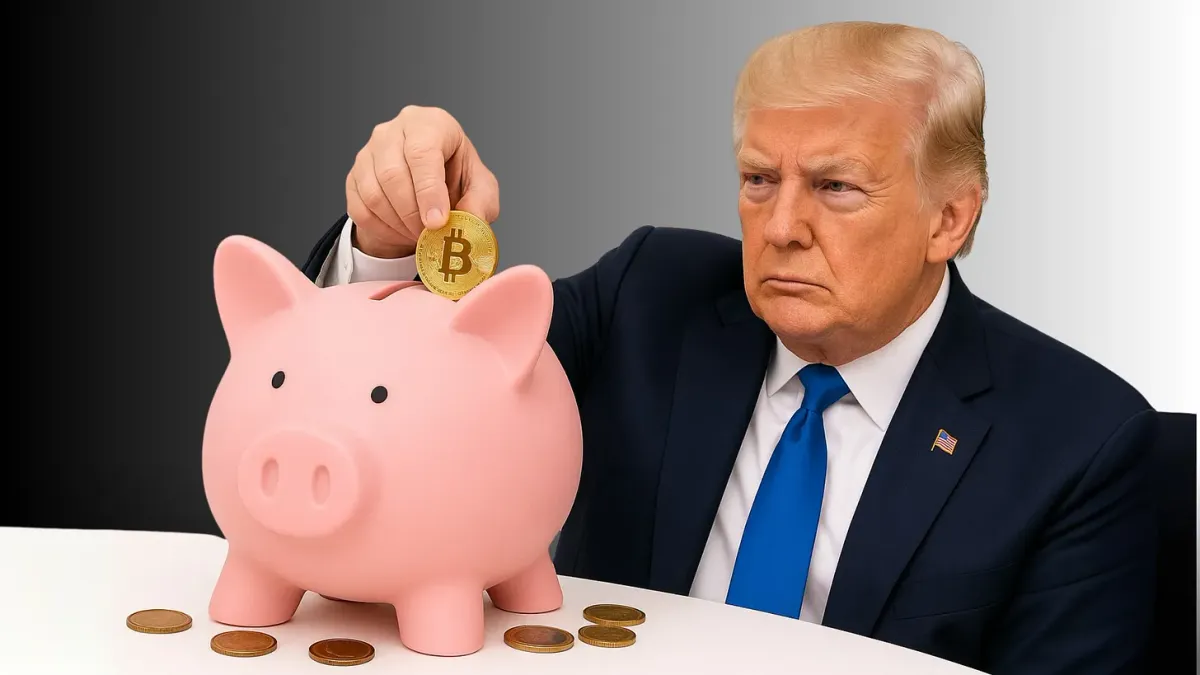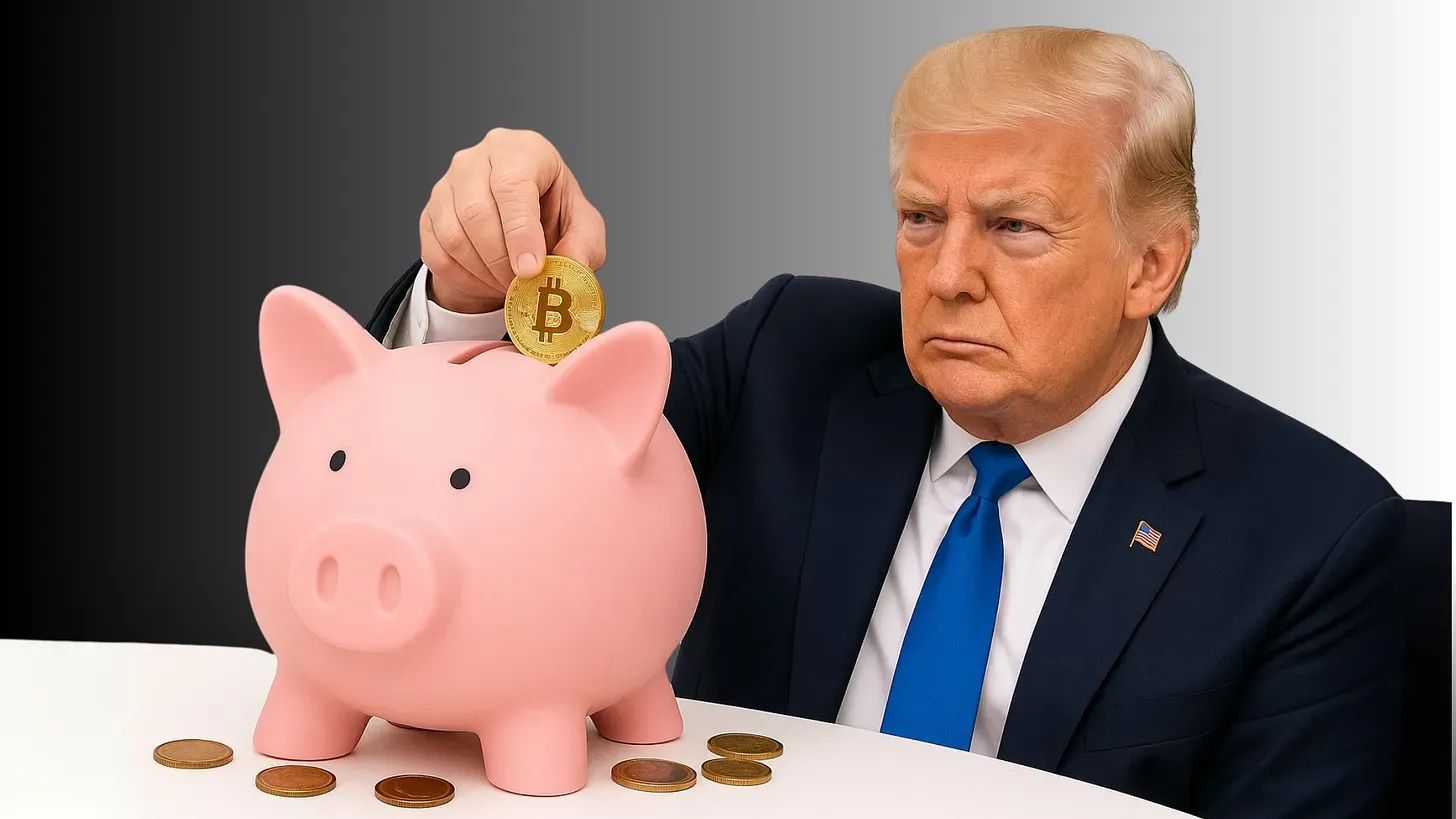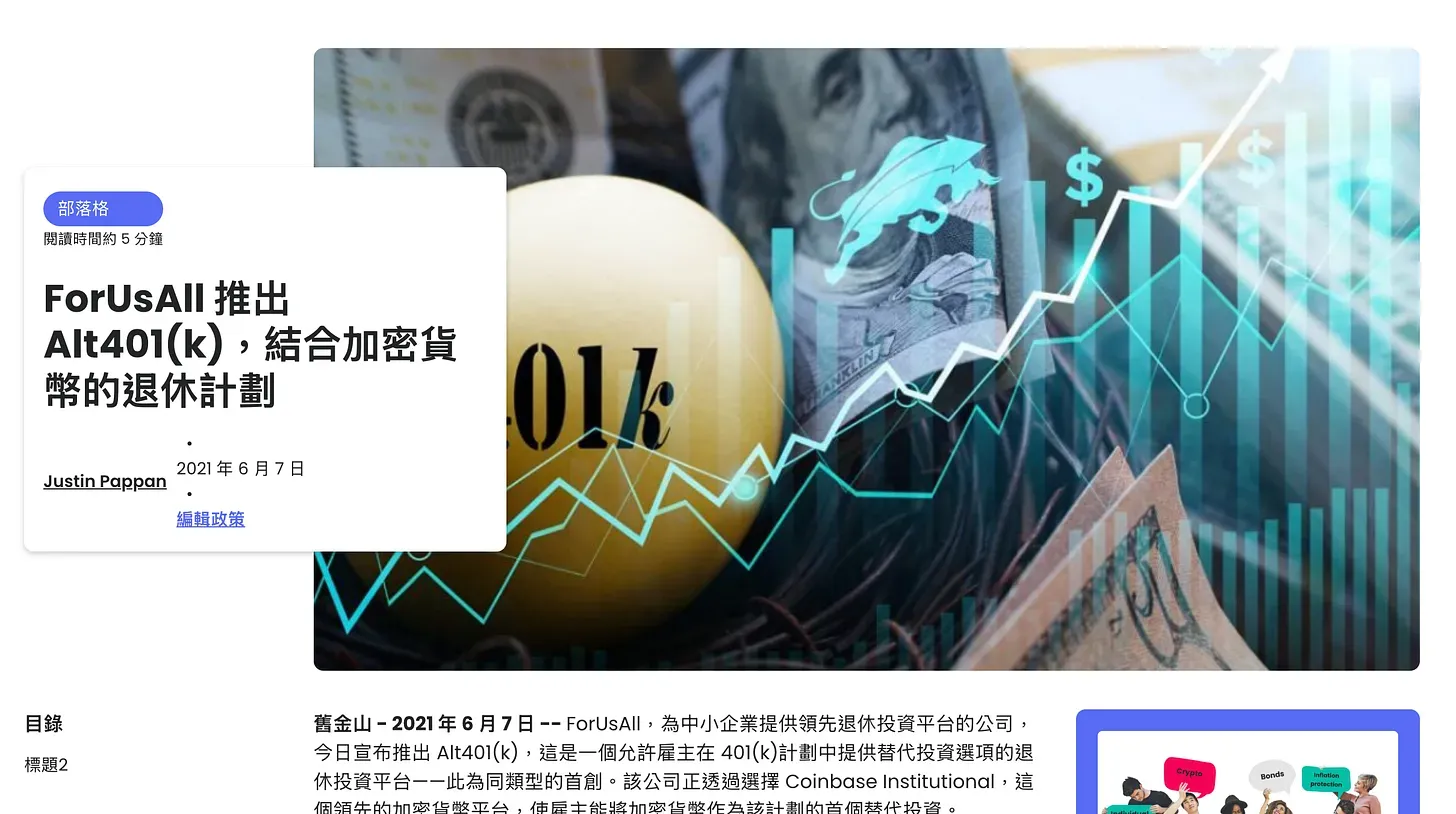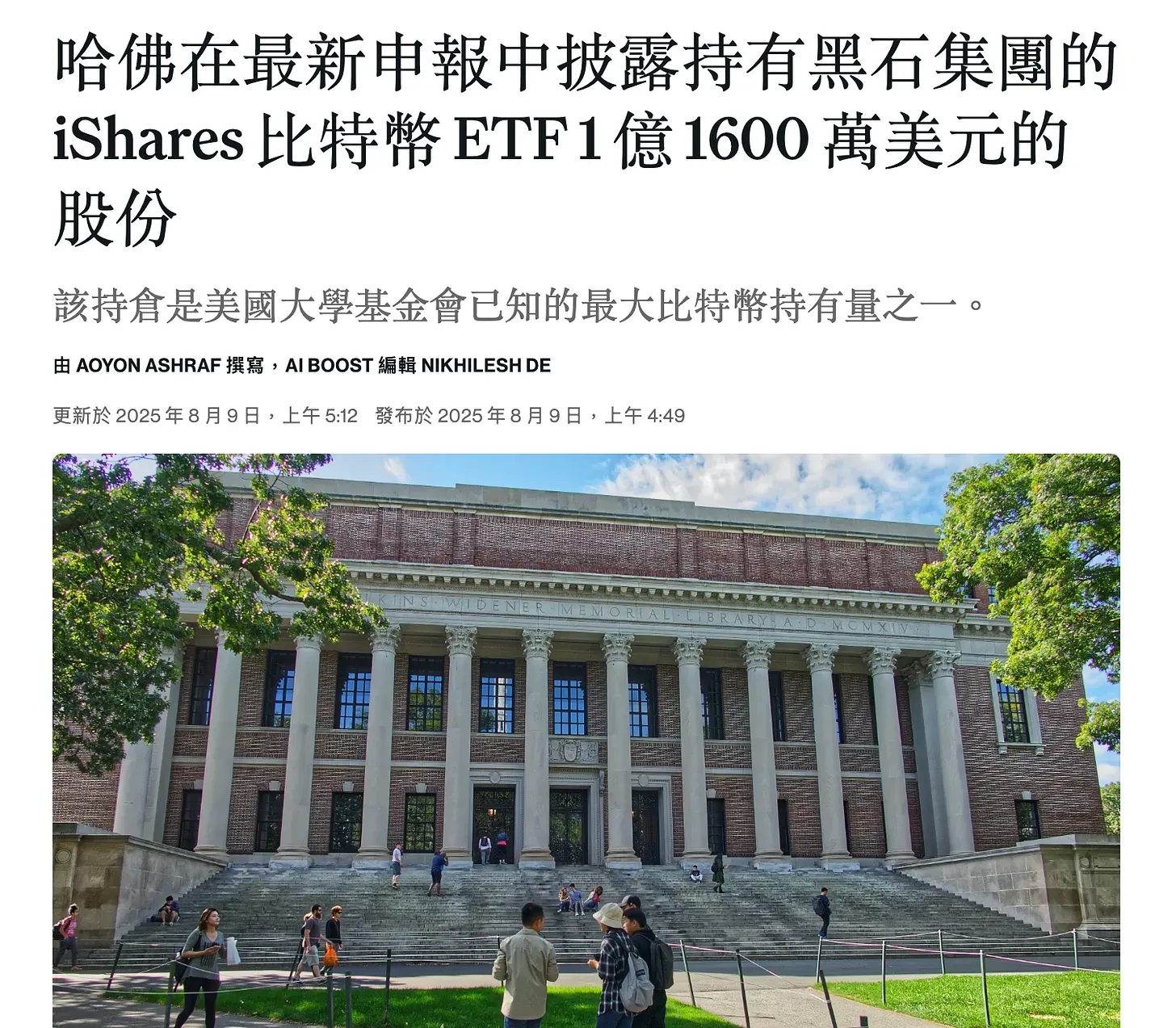$9 Trillion in Retirement Funds Entering the Market! Trump Lifts the 401(k) Cryptocurrency Ban

GM,
Last week, U.S. President Donald Trump signed an executive order easing investment restrictions on the 401(k) retirement savings plan. This change allows employees working in the United States to invest their retirement funds in assets that were previously considered high-risk—such as real estate, private equity, and cryptocurrencies. While it will take a few months for the policy to be implemented, it’s foreseeable that in the future, some Americans will begin using their retirement savings to buy crypto on a monthly dollar-cost averaging basis, injecting fresh liquidity into the market.
The most immediate impact, of course, will be on crypto prices. The 401(k) is the primary retirement savings plan in the United States, with total assets approaching USD 9 trillion and participation exceeding 90 million people—covering nearly all American employees.
For those who have never worked in the U.S., it may be hard to grasp the importance of the 401(k). Unlike Taiwan’s labor insurance system, which is centrally managed by the government, the 401(k) is a shared responsibility between employers and employees. To understand why it is designed this way, we first need to look at the historical evolution of the American pension system.

The 401(k) Retirement Savings Plan
In the early days, U.S. companies designed pension systems based on the assumption that employee turnover would be very low. Most employees would work for the same company for decades until retirement, and the company—taking “responsibility” for the employee’s life—would pay them a monthly pension to ensure a comfortable retirement. This money was managed entirely by the company, meaning that if investments went bad or the company went bankrupt, the pension would vanish along with it. In 1974, the U.S. passed the Employee Retirement Income Security Act to require companies to safeguard pension funds—a move aimed at managing such risks.
At the other extreme, some companies provided no pension at all, simply adding the equivalent amount to employees’ salaries and leaving them to invest on their own. If they managed their finances well, retirement would be secure; if not, the company bore no responsibility.
The 401(k) retirement savings plan falls somewhere in between. Pension funds are neither distributed monthly after retirement nor paid out with every paycheck. Instead, employees must create a retirement savings account, into which they contribute a portion of their salary each month, and the company matches that contribution with its own.
These retirement savings accounts come with their own rules. Employees can’t use the money to open a bubble tea shop; they can only choose investments from a “menu” provided by the company. Employers are responsible for ensuring that the menu doesn’t lead employees to lose everything. For example, if one option were “go all-in on Dogecoin with your retirement fund 1” and you invested in it only for Dogecoin’s value to crash, wiping out your savings, you could sue the company—and you’d likely win.
For that reason, companies avoid giving employees any grounds for a lawsuit. But what counts as “safe” changes with investment norms over time. In the 1970s, when index funds first appeared, investing employees’ pensions in them could be grounds for a lawsuit. Today, almost every 401(k) menu includes index funds like SPY, which track the overall market, while individual stocks pose greater legal risks to employers—let alone cryptocurrencies. This is why last week’s executive order signed by Trump carries such significant implications.
Lifting the Ban
Many of my friends working in Silicon Valley often say that their actual annual salary is only about half of what’s on paper—because the other half goes to taxes. The 401(k) is a legal tax-saving channel provided by the U.S. government, and with additional matching contributions from employers, it’s no surprise that everyone tries to contribute the maximum allowed.
As early as 2021, Coinbase spotted the massive potential of the retirement fund market and partnered with a small 401(k) provider, ForUsAll, to offer cryptocurrency investment options. But almost immediately, the U.S. Department of Labor—the regulatory body overseeing 401(k) plans—took notice, warning companies to exercise “extreme caution” in evaluating such options and even threatening to launch investigations. This was essentially a show of force: even if employees didn’t sue you, the regulator would cause you trouble. As a result, most companies dared not act rashly—until the Trump administration came into power.

In May of this year, the U.S. Department of Labor rescinded the bulletin issued by the previous administration, arguing that its demand for companies to exercise “extreme caution” lacked legal basis. In other words, the regulator was now promising not to cause trouble for you—as long as your employees didn’t sue you. Everyone thought this was already a great improvement, but last week Trump went a step further by signing an executive order that cleared the way for alternative assets like cryptocurrency. According to the White House press release:
The executive order signed by President Trump aims to expand the investment options in 401(k) retirement savings plans, allowing the inclusion of “alternative assets” such as private equity, real estate, and digital assets… He instructed the Department of Labor to work with the Treasury Department, the Securities and Exchange Commission, and other regulatory bodies to re-examine whether the current Employee Retirement Income Security Act is excessively interfering with and hindering people from accumulating retirement savings.
Trump is essentially asking the Secretary of Labor to “rewrite” the guidance on alternative assets. It’s not hard to imagine which direction the new guidelines will take in a few months. This is not only a major policy shift, but also a sign that the U.S. government intends to redefine the concept of risk for this era—where not buying could be riskier than buying.
Earlier this year, U.S. Vice President JD Vance proclaimed at a Bitcoin conference that he wanted to “get 100 million Americans to own cryptocurrency.” At the time, many were skeptical. Now it’s clear that if major 401(k) providers like Vanguard and Fidelity start allowing companies to invest in crypto, that promise will be 90% fulfilled. No wonder some netizens joke that this is an even greater feat than a “National Strategic Reserve”—it’s a “People’s Strategic Reserve.”
In the past, when people saw large corporations adopting blockchain, it was considered a positive signal—even if they weren’t buying any cryptocurrency themselves. Now, corporate crypto purchases are no longer news, and the U.S. government is going further by designing systems that enable the entire population to buy crypto. This marks a pivotal moment for embedding cryptocurrency into the financial system.
A People’s Strategic Reserve
Naturally, this policy has its critics—especially among experts and scholars who believe Bitcoin will eventually go to zero. Renowned economist Peter Schiff criticized the move, saying that Americans already have limited retirement savings, and Trump is now letting them “gamble” with cryptocurrencies, which he likened to pouring gasoline on a fire.
This reminds me of a comment from 2018, when Harvard economics professor Kenneth Rogoff warned on CNBC: “Ten years from now, the probability of Bitcoin dropping to $100 is greater than it reaching $100,000.” At the time, such a statement was widely accepted—Bitcoin was indeed highly volatile and deeply speculative. But the decade isn’t even up yet, and his prediction has already failed. Even Harvard University’s own endowment fund—one of the most conservative institutional investors—recently bought $117 million worth of Bitcoin ETFs at an average price of $115,000 per bitcoin. Its Bitcoin holdings now even exceed its positions in Google and Nvidia stocks.

Is Investing in Bitcoin a Risk? The book Liberalism of Financial Freedom: The Multiverse of Money offers a different perspective. Author Gao Chongjian argues that people who don’t invest are essentially placing all their assets on fiat currency. Zhou Qin-Hua, author of Tech Island Digest, vividly compares this to Galileo’s heliocentrism:
When humanity discovered that the Earth is not the center of the universe, it lost its sense of reliance and realized it had to find the meaning of life on its own. Similarly, when we realize that fiat currency is also a collective construct that can collapse, we must take responsibility for our own finances. Breaking free from the shackles of this mindset is only the first step. The more difficult second step is figuring out how to establish personal financial sovereignty in practice.
Most people in Taiwan are accustomed to using fiat currency as the standard. When we say gold has gone up or housing prices have fallen, the reference point is always the New Taiwan dollar—making cryptocurrency appear unstable by comparison. Yet Taiwan itself experienced severe inflation between 1946 and 1949, when the Old Taiwan dollar depreciated sharply and prices soared. Perhaps our elders understand better than anyone the risks of placing all trust in fiat money.
In today’s world, what is the definition of prudent investing? Corporations and even Harvard University are showing through their actions that holding Bitcoin is a form of diversification. If the U.S. dollar were truly the most stable asset in the world, why would its very issuer—the U.S. government—feel the need to build a National Strategic Reserve and open up the 401(k) system as a People’s Strategic Reserve?





